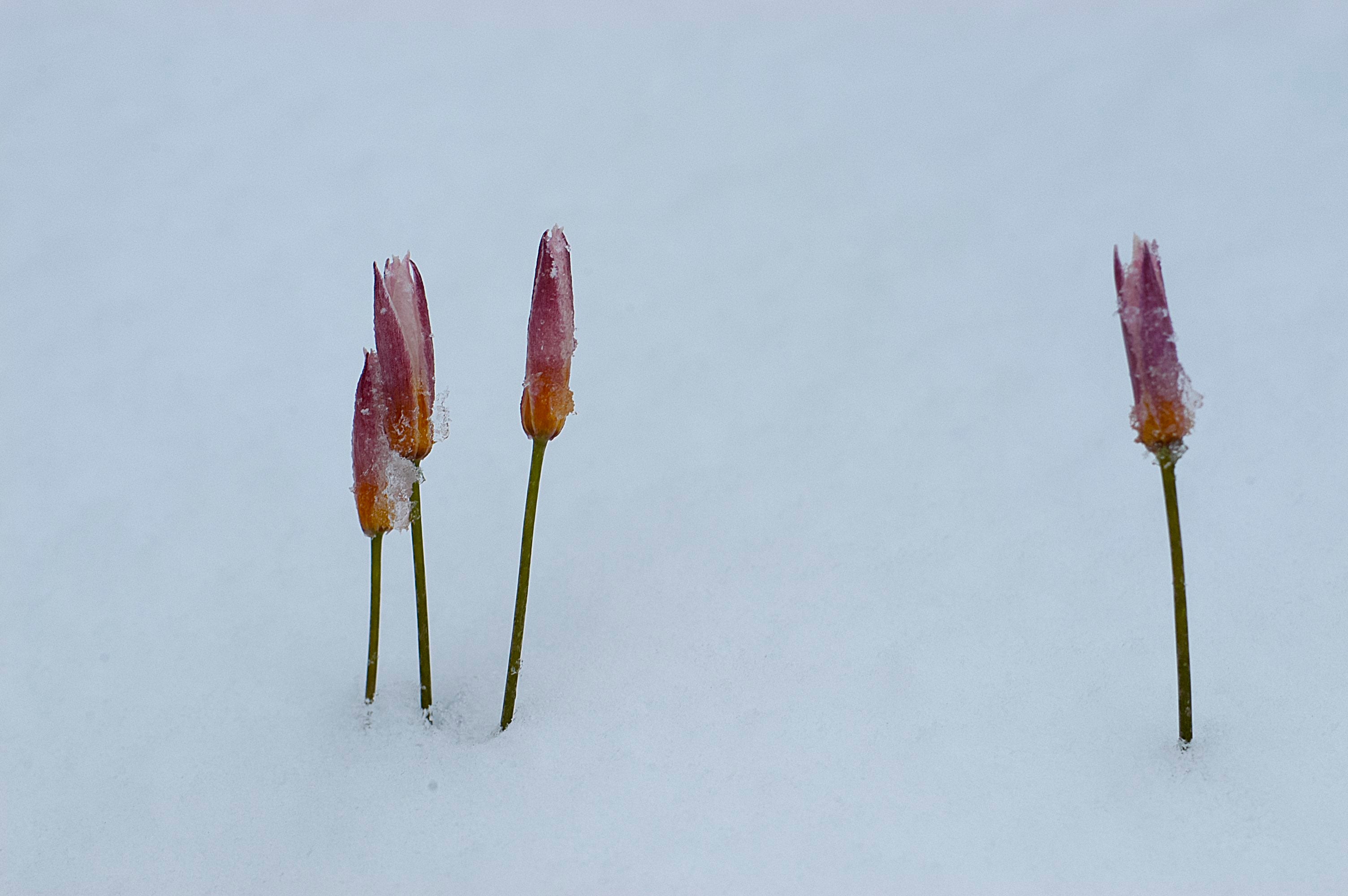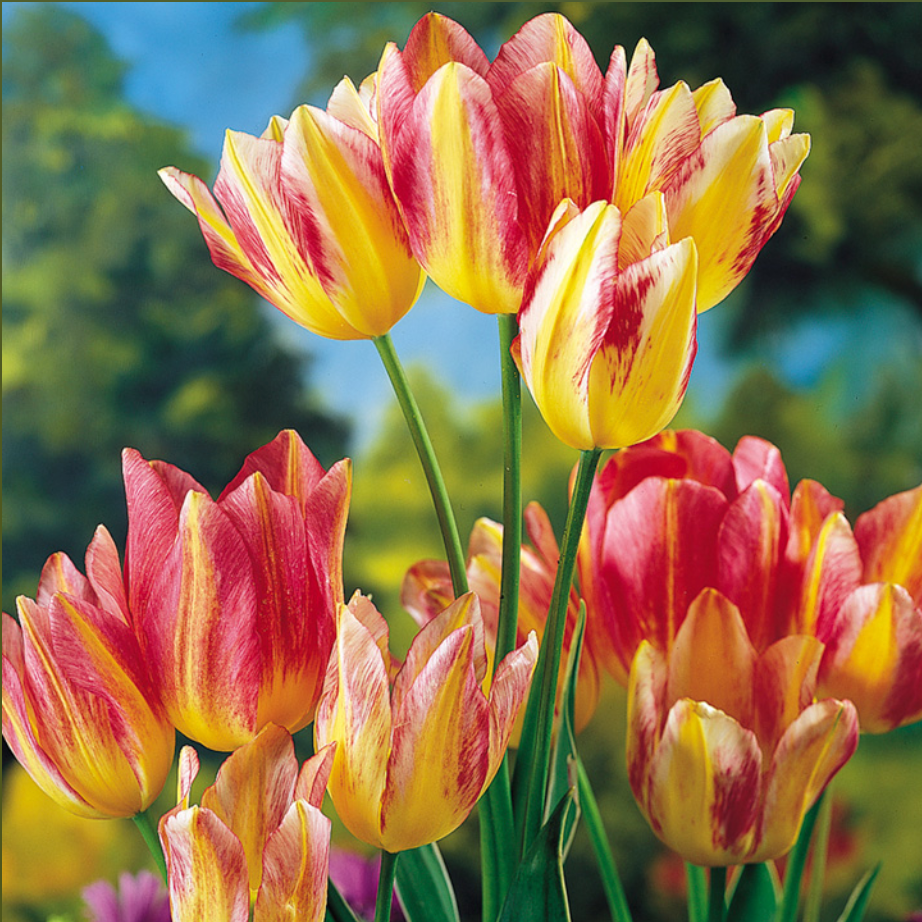
Do Tulips Need A Cold Period To Bloom?

Today's #TulipFact: Tulips have evolved to require an extended period of cold dormancy before they will flower. In hot climates, they can actually be 'tricked' into blooming by storing them in a cold place (like a refrigerator) for 12-16 weeks.
Tulips originated over a thousand years ago in the mountainous, high-plain regions of Central and Southwest Asia. In such climates, the flowers would be exposed to cold winters, rapidly draining soil, strong winds, and lots and lots of sun. It is no surprise, then, that this is the kind of environment that Tulips prefer today.
The Tulip lifecycle is built around this kind of environment. They flower in the Spring, soaking up as much energy as possible from the sun and using it to build up energy stores of starches and carbohydrates. This is also when they reproduce, whether by seeds or by bulb offshoots (see our post on Tulip reproduction here). After several weeks, the flower and leaves will wilt and die off, leaving the bulb underground.
The bulb is entirely dormant during the summer, and this is the only time it can be safely removed from the ground and transported. It is very important, too, that the bulb stay cool and dry during this time, as otherwise it can die.
When the temperatures begin to cool is when things get interesting. Soil temperatures below 55 degrees F (13 degrees C) triggers a natural biochemical process of breaking down stores of starches and carbohydrates into glucose. This helps the bulb withstand the colder temperatures, as water filled with glucose is less likely to freeze (it functions similarly to adding salt to a frozen sidewalk!). And when the temperatures begin to rise, this glucose is the primary energy source used by the bulb to bloom and flower.
This process typically requires 12 to 14 weeks of cold (below 55 degree F) soil, and is why Tulips don't grow well in hot climates. However, it is possible to 'trick' bulbs in these climates into blooming. In Mid-September to October, place the bulbs in the refrigerator in something that will allow for air flow like a paper bag or an egg carton. Be careful not to store near any fruit (particularly apples) as ripening fruit emits ethylene gas that can kill the tiny flower inside the bulb.
Keep the bulbs cool for at least 12 weeks, then plant them outside during the coldest time of the year. It is very important that the bulbs are taken directly from the refrigerator to the ground, as if they warm up they will want to start sprouting stems early, a problem as they won't yet have roots!
Plant the bulbs 6 to 8 inches deep in well-drained soil. Unlike in cooler climates, they won't need full sunlight to get the energy they need, so partial shade is okay. It is also recommended to add a few inches of mulch to keep the soil cool and moist.
This will allow the bulbs to grow roots, then sprout when the temperatures begin to warm up, providing a lovely bed of beautiful flowers. The only downside is that, even with proper care, these Tulips are still outside of their preferred environment. It is uncommon that they re-grow the following year (and to have any chance of this requires a lot of work - see our post about it here). It is for this reason that Tulips are frequently viewed as 'Annuals' (bloom only once) as opposed to 'Perennials' (bloom every year).
Image courtesy of Eric Breed and Tulips in the Wild

